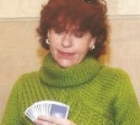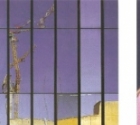
Once again, Pesach is almost upon us. Spring cleaning. The Seder. Order.
One may well ask what this has to do with Bridge, but reflecting on the Seder reminded me of the importance of the order – timing, if you will – in which the cards are played at the Bridge table. There is no Haggadah to guide us from Kadesh to Nirzah so we must rely on our wits to navigate us from the opening trick to a successful conclusion.
Consider the following innocuous-looking 4 Heart contract played by South. West leads the ♦Q.
|
North |
|
♠ Q 7 4 |
|
♥ A 10 5 2 |
|
♦K 7 2 |
|
♣ Q 10 5 |
|
South |
|
♠ A 2 |
|
♥ Q J 9 6 4 |
|
♦ A 8 3 |
|
♣ K J 6 |
At first glance, there are 4 potential losers, one in each suit, so the contract is in jeopardy. A successful finesse for the ♥K will ensure the contract but if that card is in the East hand, we need to find a way to eliminate a diamond loser. On closer inspection, we see that playing a spade towards the ♣Q will promote that card as a winner, if West has the ♣K, and provide us a parking place for the diamond loser in our hand. So we can bring home the contract if West has either of the missing Kings, but we need to be careful about the order of plays.
The proper line of play is to win the first trick with the ♦A in the closed hand, cash the ªA and then play a small spade towards dummy. If West wins the trick with the ♣K, we will win the diamond continuation with the ♦K in dummy and discard the remaining diamond in our hand on the ♣Q. Note that if we try the heart finesse at trick two and it loses, the opponents will drive out our ♦K before we have a chance to establish the ♣Q as a winner. The full hand is as follows:
|
|
North |
|
|
|
♠ Q 7 4 |
|
|
|
♥ A 10 5 2 |
|
|
West |
♦ K 7 2 |
East |
|
♠ K 10 3 |
♣ Q 10 5 |
♠ J 9 8 6 5 |
|
♥ 8 7 |
|
♥ K 3 |
|
♦ Q J 10 9 5 |
South |
♦ 6 4 |
|
♣ A 9 2 |
♠ A 2 |
♣ 8 7 4 3 |
|
|
♥ Q J 9 6 4 |
|
|
|
♦ A 8 3 |
|
|
|
♣ K J 6 |
|
The second hand is very similar to one I gave two years ago in my article in ESRA 155. As South, you are declarer in 3NT and receive the lead of the ♣4, West’s fourth highest card in that suit:
|
North |
|
♠ 8 5 |
|
♥ J 10 8 |
|
♦ K 9 4 |
|
♣ A Q 9 5 2 |
|
South |
|
♠ A K 6 |
|
♥ K Q 6 2 |
|
♦ A 8 |
|
♣ J 10 8 4 |
Counting winners, you can see you have 2 spade tricks and 2 diamond tricks on top. If the club finesse is on, there are 12 tricks for the taking. Even if the club finesse loses, all that is needed is for you to knock out the ♥A to establish a heart trick and to fulfill the contract. If the opponents’ spades are 4-4, they can take at most 4 tricks – 2 spades, a heart and a club. So where’s the danger? West may have 5 or more spades - you can’t see either the ♣2 or the ♣3 in dummy or in your hand, so West may well have one of them – and the opponents may be able to take 5 tricks to set the contract.
The essential order of the plays is to win the first trick with the ♣A and immediately play on hearts. When either opponent wins with the ♥A and returns spades, duck the spade continuation and win the third round of that suit with the ♠K. Now you can afford to finesse clubs into the danger hand – East. If East wins and still has a fourth spade, there is no problem as the opponents are restricted to 4 tricks in total. But in the dangerous case where West started with 5 spades, East is now out of spades. There is no way for East to reach partner’s hand and the contract is made with an overtrick. This is the full layout:
|
|
North |
|
|
|
♠ 8 5 |
|
|
|
♥ J 10 8 |
|
|
West |
♦ K 9 4 |
East |
|
♠ Q10 7 4 2 |
♣ A Q 9 5 2 |
♠ J 9 3 |
|
♥ A 9 |
|
♥ 7 5 4 3 |
|
♦ 7 6 5 3 |
South |
♦ Q J 10 2 |
|
♣ 63 |
♠ A K 6 |
♣ K 7 |
|
|
♥ K Q 6 2 |
|
|
|
♦ A 8 |
|
|
|
♣ J 10 8 4 |
|
A final word of caution: If you duck the opening spade lead you give the tempo to the opponents. East will switch to ♦Q. Now, no matter how you play the clubs and hearts, the opponents will continue to attack diamonds whenever they gain the lead and end up with 5 tricks - the opening spade trick, the ♥A, the ♣K and 2 diamonds.
Have a great Seder and may your Bridge timing be immaculate.
 Milestones 168
Milestones 168 “Be our Guest” at Beauty and the Beast
“Be our Guest” at Beauty and the Beast Advertisers List
Advertisers List Bridge the right way
Bridge the right way A Bit of Humor on Food
A Bit of Humor on Food ESRA Photo enthusiasts meet monthly
ESRA Photo enthusiasts meet monthly Alan Caplan
Alan Caplan